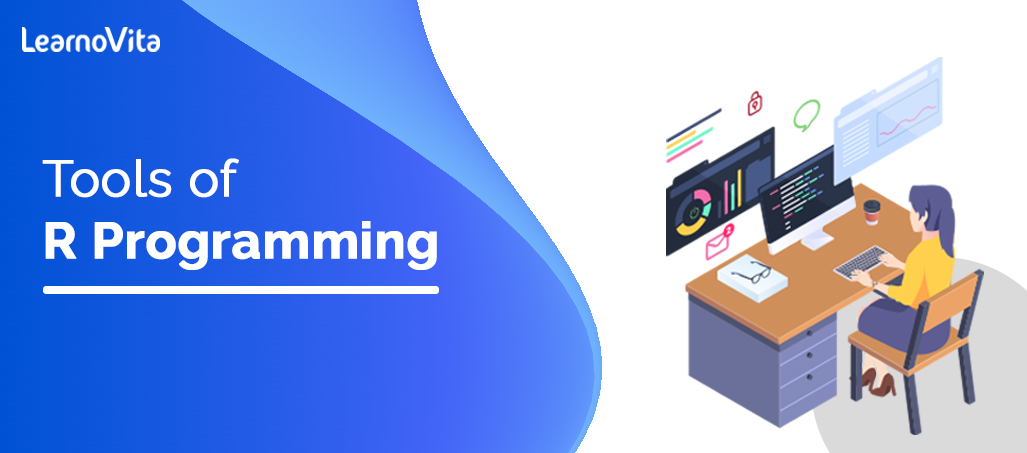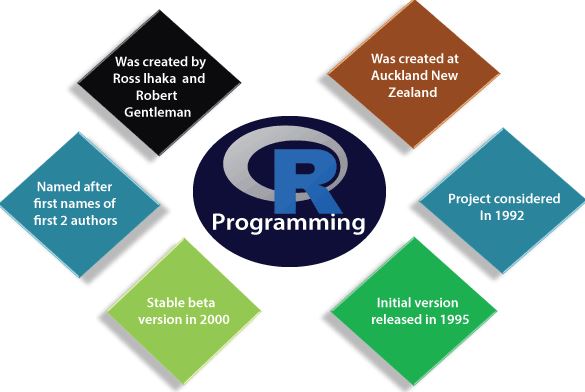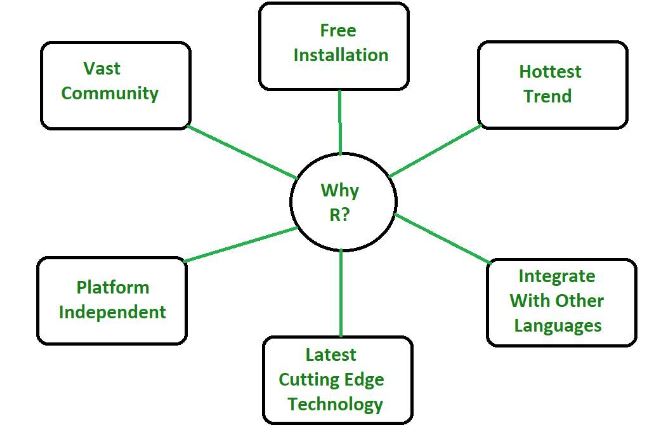- What is Dimension Reduction? | Know the techniques
- Top Data Science Software Tools
- What is Data Scientist? | Know the skills required
- What is Data Scientist ? A Complete Overview
- Know the difference between R and Python
- What are the skills required for Data Science? | Know more about it
- What is Python Data Visualization ? : A Complete guide
- Data science and Business Analytics? : All you need to know [ OverView ]
- Supervised Learning Workflow and Algorithms | A Definitive Guide with Best Practices [ OverView ]
- Open Datasets for Machine Learning | A Complete Guide For Beginners with Best Practices
- What is Data Cleaning | The Ultimate Guide for Data Cleaning , Benefits [ OverView ]
- What is Data Normalization and Why it is Important | Expert’s Top Picks
- What does the Yield keyword do and How to use Yield in python ? [ OverView ]
- What is Dimensionality Reduction? : ( A Complete Guide with Best Practices )
- What You Need to Know About Inferential Statistics to Boost Your Career in Data Science | Expert’s Top Picks
- Most Effective Data Collection Methods | A Complete Beginners Guide | REAL-TIME Examples
- Most Popular Python Toolkit : Step-By-Step Process with REAL-TIME Examples
- Advantages of Python over Java in Data Science | Expert’s Top Picks [ OverView ]
- What Does a Data Analyst Do? : Everything You Need to Know | Expert’s Top Picks | Free Guide Tutorial
- How To Use Python Lambda Functions | A Complete Beginners Guide [ OverView ]
- Most Popular Data Science Tools | A Complete Beginners Guide | REAL-TIME Examples
- What is Seaborn in Python ? : A Complete Guide For Beginners & REAL-TIME Examples
- Stepwise Regression | Step-By-Step Process with REAL-TIME Examples
- Skewness vs Kurtosis : Comparision and Differences | Which Should You Learn?
- What is the Future scope of Data Science ? : Comprehensive Guide [ For Freshers and Experience ]
- Confusion Matrix in Python Sklearn | A Complete Beginners Guide | REAL-TIME Examples
- Polynomial Regression | All you need to know [ Job & Future ]
- What is a Web Crawler? : Expert’s Top Picks | Everything You Need to Know
- Pandas vs Numpy | What to learn and Why? : All you need to know
- What Is Data Wrangling? : Step-By-Step Process | Required Skills [ OverView ]
- What Does a Data Scientist Do? : Step-By-Step Process
- Data Analyst Salary in India [For Freshers and Experience]
- Elasticsearch vs Solr | Difference You Should Know
- Tools of R Programming | A Complete Guide with Best Practices
- How To Install Jenkins on Ubuntu | Free Guide Tutorial
- Skills Required to Become a Data Scientist | A Complete Guide with Best Practices
- Applications of Deep Learning in Daily Life : A Complete Guide with Best Practices
- Ridge and Lasso Regression (L1 and L2 regularization) Explained Using Python – Expert’s Top Picks
- Simple Linear Regression | Expert’s Top Picks
- Dispersion in Statistics – Comprehensive Guide
- Future Scope of Machine Learning | Everything You Need to Know
- What is Data Analysis ? Expert’s Top Picks
- Covariance vs Correlation | Difference You Should Know
- Highest Paying Jobs in India [ Job & Future ]
- What is Data Collection | Step-By-Step Process
- What Is Data Processing ? A Step-By-Step Guide
- Data Analyst Job Description ( A Complete Guide with Best Practices )
- What is Data ? All you need to know [ OverView ]
- What Is Cleaning Data ?
- What is Data Scrubbing?
- Data Science vs Data Analytics vs Machine Learning
- How to Use IF ELSE Statements in Python?
- What are the Analytical Skills Necessary for a Successful Career in Data Science?
- Python Career Opportunities
- Top Reasons To Learn Python
- Python Generators
- Advantages and Disadvantages of Python Programming Language
- Python vs R vs SAS
- What is Logistic Regression?
- Why Python Is Essential for Data Analysis and Data Science
- Data Mining Vs Statistics
- Role of Citizen Data Scientists in Today’s Business
- What is Normality Test in Minitab?
- Reasons You Should Learn R, Python, and Hadoop
- A Day in the Life of a Data Scientist
- Top Data Science Programming Languages
- Top Python Libraries For Data Science
- Machine Learning Vs Deep Learning
- Big Data vs Data Science
- Why Data Science Matters And How It Powers Business Value?
- Top Data Science Books for Beginners and Advanced Data Scientist
- Data Mining Vs. Machine Learning
- The Importance of Machine Learning for Data Scientists
- What is Data Science?
- Python Keywords
- What is Dimension Reduction? | Know the techniques
- Top Data Science Software Tools
- What is Data Scientist? | Know the skills required
- What is Data Scientist ? A Complete Overview
- Know the difference between R and Python
- What are the skills required for Data Science? | Know more about it
- What is Python Data Visualization ? : A Complete guide
- Data science and Business Analytics? : All you need to know [ OverView ]
- Supervised Learning Workflow and Algorithms | A Definitive Guide with Best Practices [ OverView ]
- Open Datasets for Machine Learning | A Complete Guide For Beginners with Best Practices
- What is Data Cleaning | The Ultimate Guide for Data Cleaning , Benefits [ OverView ]
- What is Data Normalization and Why it is Important | Expert’s Top Picks
- What does the Yield keyword do and How to use Yield in python ? [ OverView ]
- What is Dimensionality Reduction? : ( A Complete Guide with Best Practices )
- What You Need to Know About Inferential Statistics to Boost Your Career in Data Science | Expert’s Top Picks
- Most Effective Data Collection Methods | A Complete Beginners Guide | REAL-TIME Examples
- Most Popular Python Toolkit : Step-By-Step Process with REAL-TIME Examples
- Advantages of Python over Java in Data Science | Expert’s Top Picks [ OverView ]
- What Does a Data Analyst Do? : Everything You Need to Know | Expert’s Top Picks | Free Guide Tutorial
- How To Use Python Lambda Functions | A Complete Beginners Guide [ OverView ]
- Most Popular Data Science Tools | A Complete Beginners Guide | REAL-TIME Examples
- What is Seaborn in Python ? : A Complete Guide For Beginners & REAL-TIME Examples
- Stepwise Regression | Step-By-Step Process with REAL-TIME Examples
- Skewness vs Kurtosis : Comparision and Differences | Which Should You Learn?
- What is the Future scope of Data Science ? : Comprehensive Guide [ For Freshers and Experience ]
- Confusion Matrix in Python Sklearn | A Complete Beginners Guide | REAL-TIME Examples
- Polynomial Regression | All you need to know [ Job & Future ]
- What is a Web Crawler? : Expert’s Top Picks | Everything You Need to Know
- Pandas vs Numpy | What to learn and Why? : All you need to know
- What Is Data Wrangling? : Step-By-Step Process | Required Skills [ OverView ]
- What Does a Data Scientist Do? : Step-By-Step Process
- Data Analyst Salary in India [For Freshers and Experience]
- Elasticsearch vs Solr | Difference You Should Know
- Tools of R Programming | A Complete Guide with Best Practices
- How To Install Jenkins on Ubuntu | Free Guide Tutorial
- Skills Required to Become a Data Scientist | A Complete Guide with Best Practices
- Applications of Deep Learning in Daily Life : A Complete Guide with Best Practices
- Ridge and Lasso Regression (L1 and L2 regularization) Explained Using Python – Expert’s Top Picks
- Simple Linear Regression | Expert’s Top Picks
- Dispersion in Statistics – Comprehensive Guide
- Future Scope of Machine Learning | Everything You Need to Know
- What is Data Analysis ? Expert’s Top Picks
- Covariance vs Correlation | Difference You Should Know
- Highest Paying Jobs in India [ Job & Future ]
- What is Data Collection | Step-By-Step Process
- What Is Data Processing ? A Step-By-Step Guide
- Data Analyst Job Description ( A Complete Guide with Best Practices )
- What is Data ? All you need to know [ OverView ]
- What Is Cleaning Data ?
- What is Data Scrubbing?
- Data Science vs Data Analytics vs Machine Learning
- How to Use IF ELSE Statements in Python?
- What are the Analytical Skills Necessary for a Successful Career in Data Science?
- Python Career Opportunities
- Top Reasons To Learn Python
- Python Generators
- Advantages and Disadvantages of Python Programming Language
- Python vs R vs SAS
- What is Logistic Regression?
- Why Python Is Essential for Data Analysis and Data Science
- Data Mining Vs Statistics
- Role of Citizen Data Scientists in Today’s Business
- What is Normality Test in Minitab?
- Reasons You Should Learn R, Python, and Hadoop
- A Day in the Life of a Data Scientist
- Top Data Science Programming Languages
- Top Python Libraries For Data Science
- Machine Learning Vs Deep Learning
- Big Data vs Data Science
- Why Data Science Matters And How It Powers Business Value?
- Top Data Science Books for Beginners and Advanced Data Scientist
- Data Mining Vs. Machine Learning
- The Importance of Machine Learning for Data Scientists
- What is Data Science?
- Python Keywords

Tools of R Programming | A Complete Guide with Best Practices
Last updated on 31st Oct 2022, Artciles, Blog, Data Science
- In this article you will learn:
- 1.What Is R?
- 2.What Is R and What Are the Advantages?
- 3.Does R Have Any Drawbacks?
- 4.What is R Used For?
- 5.The Popularity of R by Industry.
- 6.What Are the Most Popular R Packages?
- 7.Conclusion.
What Is R?
What better place to find good definition of language than the R Foundation’s website? According to the R-Project.org, R is “… a language and environment for the statistical computing and graphics.” It’s an open-source programming language often used as data analysis and statistical software tool. The R environment consists of integrated suite of software facilities designed for a data manipulation, calculation, and graphical display. The environment features are:
- A high-performance for data storage and handling facility.
- A suite of an operators for array calculations, mainly matrices.
- A vast, simply understandable, integrated assortment of an intermediate tools dedicated to data analysis.
- Graphical facilities for the data analysis and display that work either for the on-screen or hardcopy.
- The well-developed, simple and an effective programming language, featuring are user-defined recursive functions, loops, conditionals, and input and output facilities.
The syntax of a R consists of 3 items:
- Variables, which store a data.
- Comments, which are used to improve the code readability.
- Keywords, reserved words that have special meaning for compiler.
R was developed in the 1993 by Ross Ihaka and Robert Gentleman and includes a linear regression, machine learning algorithms, statistical inference, time series, and more.R is universal programming language compatible with Windows, Macintosh, UNIX, and Linux platforms. It is often referred to as a various implementation of the S language and environment and is considered be highly extensible.

What Is R and What Are the Advantages?
- It’s an open-source. No fees or licenses are needed, so it’s a low-risk venture if developing new program.
- It’s a platform-independent. R runs on all the operating systems, so developers only need to create the one program that can work on competing systems. This independence is yet another reason for why R is cost-effective!
- It has a lots of packages. For example, R language has more than 10,000 packages stored in a CRAN repository, and the number is continuously increasing.
- It’s great for statistics. Statistics are big thing today, R shines in this regard. As result, programmers prefer it over the other languages for a statistical tool development.
- It’s well suited for the Machine Learning. R is ideal for machine learning operations like regression and classification. It even offers many features and packages for the artificial neural network development.
- R lets perform data wrangling. R offers host of packages that help to data analysts turn unstructured, messy data into structured format.
- R is a still growing. R keeps an evolving and growing, constantly updating and upgrading, thanks to solid supportive community.
Does R Have Any Drawbacks?
- It’s the complicated language. R has steep learning curve. It’s a language best suited for the people who have previous programming experience.
- It’s not as a secure. R doesn’t have a basic security measures. Consequently, it’s not good choice for making a web-safe applications. Also, R can’t be embedded in a web browsers.
- It’s a slow. R is slower than the other programming languages like a Python or MATLAB.
- It takes up lot of memory. Memory management isn’t one of a R’s strong points. R’s data must be stored in a physical memory. However, the increasing use of a cloud-based memory may eventually make this drawback moot.
- It doesn’t have a consistent documentation/package quality. Docs and packages can be patchy and be inconsistent, or incomplete. That’s the price pay for the language that doesn’t have official, dedicated support and instead is maintained and added to by a community.

What is R Used For?
Although R is famous language used by many programmers, it is especially an effective when used for:
- Data analysis.
- Statistical inference.
- Machine learning algorithms.
R offers the wide variety of statistics-related libraries and provides the favorable environment for statistical computing and design. In addition, the R programming language gets used by a many quantitative analysts as a programming tool since it’s useful for the data importing and cleaning.As of a August 2021, R is one of top five programming languages of the year, so it’s a favorite among the data analysts and research programmers. It’s also used as fundamental tool for finance, which relies a heavily on statistical data.
The Popularity of R by Industry:
- Fintech Companies (financial services).
- Academic Research.
- Government (FDA, National Weather Service).
- Retail.
- Social Media.
- Data Journalism.
- Manufacturing.
- Healthcare.
This graph, provided by a Stackoverflow, gives a better idea of R programming language usage in a recent history. Given its strength in statistics, it’s hardly surprising that are R enjoys heavy use in a world of academia, as illustrated on the chart.If for specifics, here are ten significant companies or an organizations that use R, presented in a no particular order.
- Airbnb.
- Microsoft.
- Uber.
- Facebook.
- Ford.
- Google.
- Twitter.
- IBM.
- American Express.
- HP.
What Are the Most Popular R Packages?
R packages are explained as collections of R functions, sampled data, documentation, and compiled code. These elements are stored in the directory called “library” within R environment and are installed by a default during installation. R packages boost a R’s power by improving an existing functionalities, collecting sets of a R functions into one unit. In addition, R package is a reusable resource, which makes the programmer’s life much easier.
Conclusion:
From this article, can have a clear idea about a R tools technology. It is also proved that it is most important platform for development of new statistical methods. It stands ahead of the other data analysis tools. If data scientist then should definitely learn a R like any other language. If programming then will definitely working with a R tools technology. If want to become the master of R language then need to practice the language often and use it for a performing important task.
